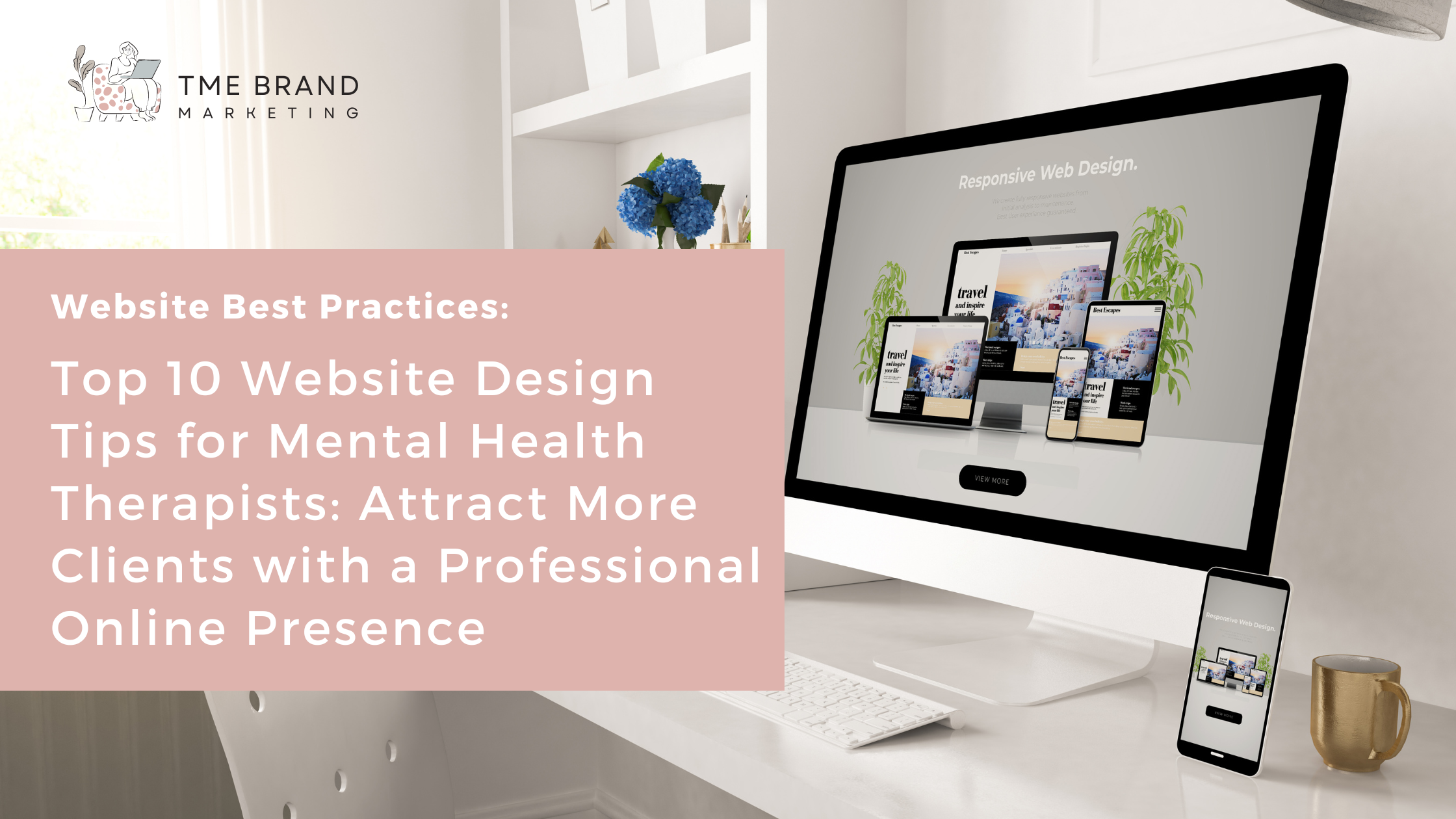
At TME Brand Marketing, we understand that building a professional online presence can feel overwhelming, especially for mental health professionals with full plates. But having a well-designed website is a game-changer when it comes to attracting the right clients and showcasing your work. That’s why we’re sharing our top website design tips to help you create a website that not only looks great but also helps grow your practice.
Here are our top 10 website design tips for mental health therapists to help you attract more clients and create an engaging online presence:
1. Make a Great First Impression
Your website is often the first interaction potential clients have with your practice. Making a great first impression with a clean, professional design is essential. Choose soothing colors, easy-to-read fonts, and calming visuals. Your website should evoke a sense of trust and calm from the moment someone lands on your homepage.
2. Prioritize Easy Navigation
Let’s face it: no one wants to struggle to find the information they need. Make your website easy to navigate by having a simple, intuitive menu. Pages like “About Me,” “Services,” and “Contact” should be easy to locate. This will make it much easier for potential clients to quickly understand what you offer and how to reach out.
3. Mobile-Friendly Design is a Must
More people are browsing websites on their phones than ever before. If your website isn’t mobile-friendly, you’re likely losing out on potential clients. Responsive design ensures your website looks great on all devices, from desktops to smartphones. It’s one of those website design tips that you can’t afford to skip!
4. Clear and Compelling Call to Actions
A website without clear call-to-actions (CTAs) is like a conversation with no conclusion. Whether it’s encouraging visitors to book a consultation, sign up for your newsletter, or read a blog post, make sure your CTAs are easy to find and compelling. Use action-oriented language like “Schedule a Session” or “Contact Me Today.”
5. Include Testimonials and Success Stories
Building trust is key in any therapeutic relationship, and testimonials from past clients can go a long way in helping new clients feel comfortable reaching out. Include success stories or feedback from clients (with permission, of course) to show the value of your work. A strong testimonial section adds credibility and builds confidence.
6. Create a Blog for SEO and Thought Leadership
We know SEO can sound like tech jargon, but it’s important for growing your practice online. One of the best ways to boost your SEO (Search Engine Optimization) is by regularly posting blog content. Sharing relevant articles about mental health, wellness tips, or even your own journey in the field not only helps with SEO but also positions you as a thought leader. A blog gives potential clients a reason to keep coming back to your website, and Google loves fresh content. If you need blog ideas, check out our Instagram or LinkedIn for weekly blog ideas.
7. Showcase Your Personality
Therapy is a deeply personal experience, and your website should reflect who you are as a person and therapist. Don’t be afraid to show some personality! Whether it’s a friendly photo of you in your office or a few fun facts on your About Page, potential clients want to know they’re connecting with someone who feels real and relatable.
8. Focus on High-Quality, Professional Imagery
First impressions matter, and low-quality or irrelevant images can undermine the professionalism of your site. Invest in professional photography or use high-quality stock images that align with your brand and message. Pictures of tranquil spaces, calm nature scenes, or even your therapy office can help evoke a sense of peace and trust.
9. Streamline Your Contact Form
One of the most important elements of your website is your contact form, yet it’s often overlooked in the design process. Make it as easy as possible for potential clients to get in touch. Keep your contact form simple—asking for a name, email, and a short message is usually enough. And be sure to include your phone number and email for those who prefer reaching out directly.
10. Don’t Forget About Speed
A slow website can be frustrating for users and hurt your SEO ranking. People tend to leave websites that take longer than a few seconds to load, which means you could lose potential clients before they even see what you have to offer. Optimize your website’s speed by compressing images and using a reliable hosting service.
At TME Brand Marketing, we’ve seen firsthand how these website design tips can help mental health therapists build strong online presences. A well-designed website is more than just a digital business card—it’s an essential tool for connecting with clients, building trust, and growing your practice.
Need help with your website?


